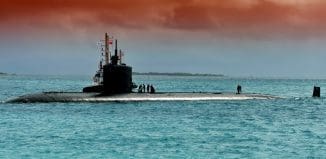The Pentagon Still Needs More Eyes in the Sky
This post is also available in:  עברית (Hebrew)
עברית (Hebrew)

Airborne intelligence has arguably given the U.S. military an advantage over adversaries on the ground during the wars in Afghanistan and Iraq and the Pentagon will continue to rely on high-tech sensors and cameras mounted on drones high above the battlefield for years to come, according to Andrew Hunter, the head of the Defense Department’s Joint Rapid Acquisition Cell.
“We need ISR,” Hunter said Wednesday when asked about the types of technologies the Pentagon will need in the years to come during a briefing with reporters at the Pentagon. “That’s been true for every conflict I have seen in 20 years that I’ve been following national security policy,” he told Defense One.
ISR stands for intelligence, surveillance and reconnaissance and most often refers to high-resolution cameras affixed to drones and manned aircraft thousands of feet above the battlefield. It could also include listening devices and radars. These sensors are often pods that attach to the wing or underbelly of a drone, such as a Predator or Reaper.
Unmanned systems conference 2014 – Israel
Since U.S. forces deployed to Afghanistan in 2001, defense firms have built more powerful cameras that have helped in locating and tracking targets on the ground.
Full-motion video is beamed by satellite from the drone to operations centers where it is analyzed and turned into intelligence.
“You can ask the question: Is enough ever enough? “ Hunter said. “We don’t seem to have found that point yet from my perspective.”
Airborne surveillance from drones has been a critical tool in the campaign against Islamic State (aka ISIS or ISIL) militants in Iraq and Syria, particularly since there are only a limited number of American forces are on the ground in Iraq.
“When you have campaigns that are air focused, that is your eyes on the battlefield because you’re not getting any other view of the battlefield from up close,” Hunter said. “That continues to be just a critical, critical capability.”
When a soldier on the battlefield needs a new tool or technology ASAP, in recent years, it’s been Hunter’s job to get it to them. The Joint Rapid Acquisition Cell operates outside of the cumbersome and complex, Pentagon procurement system, allowing it to operate at light speed when compared to the traditional weapon buying process. And just about everything the office does is classified.





























